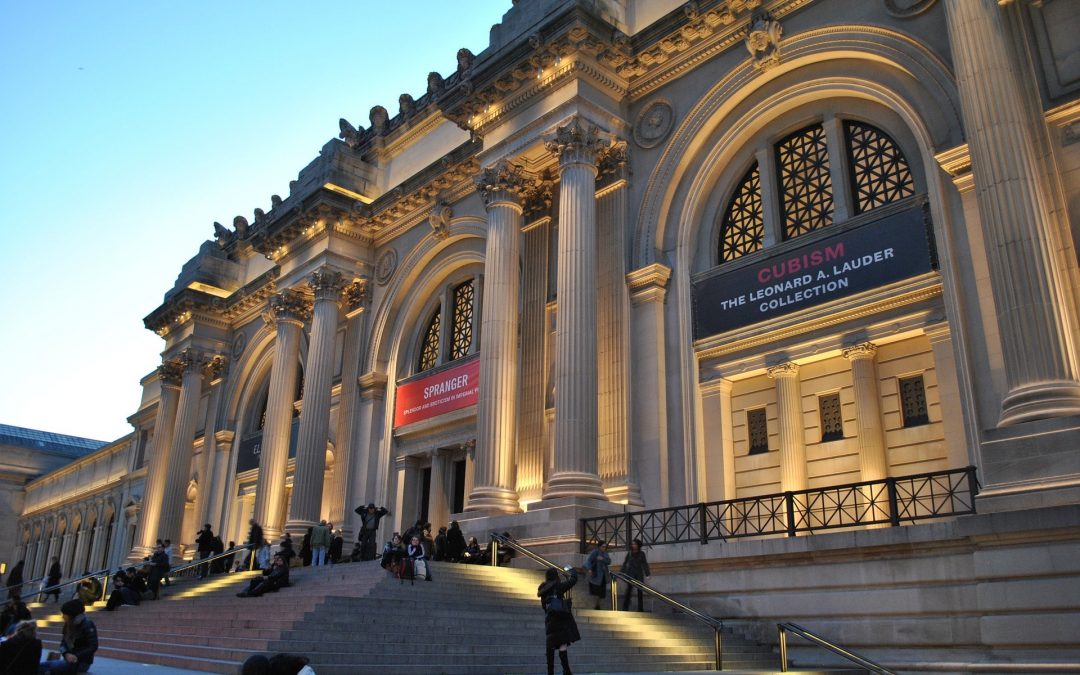In its continued commitment to the New York community, the Charatan Family Foundation supports key cultural institutions like The Met, the Museum of Modern Art (MoMA), the Jewish Museum, and the United States Holocaust Museum. In an especially turbulent political climate, these institutions can inform and transform our perspective, at a time when we need to move forward together as a city and as a country. These 2017 exhibits offer insight and opportunities for development and reflection: a welcome refuge from the current divisive political dialogue.
The Picturing Math: Selections from the Department of Drawings and Prints exhibit at The Met runs until May 1. After learning the alphabet and mathematical notation at a young age, we might easily take for granted that these systems of symbols evolved to represent agreed-upon quantities and operations, and enable communication of concepts on a larger scale. Spanning 600 years of mathematical visualization, this exhibit demonstrates the subjective evolution of numerical representation.
The Mysterious Landscapes of Hercules Segers exhibit at The Met will run from February 13 to May 21. This Dutch landscape artist counted Rembrandt amongst his admirers. His etching and painting work from the early seventeenth century reveals incredibly detailed yet stark settings, cast in nuanced texture and intricate relief.
The Seurat’s Circus Sideshow exhibit at The Met will run from February 17 to May 29. This tour de force by the master of pointillism features a popular artistic theme of the late 20th century: the traveling circus. This exhibit traces the origins of Circus Sideshow (Parade de cirque) in Seurat’s other works; the fascination seasonal fairs held for contemporary artists like Picasso and Pelez; and period materials documenting the circus spectacle.
The Marsden Hartley’s Maine exhibit at The Met Breuer will run from March 15 to June 18. Hartley’s home state was a constant theme and crucial component of his career. This exhibit focuses on Maine as a subject and influence of Hartley’s abstract and Post-Impressionist work, but also includes artists who inspired his style: Paul Cézanne, Winslow Homer, and Japanese printmakers.
The Sara Berman’s Closet exhibit at The Met will run from March 6 to September 5. The opportunity to go through another New Yorker’s closet is impossible to resist. And Sara Berman was a true New Yorker in every sense: born in Belarus in 1920, Berman immigrated to New York by way of Palestine. She lived In the same apartment in Greenwich Village from 1982 until her death in 2004. Her daughter and grandson put her all-white wardrobe on display in this intimate exhibit.
The Louise Lawler: WHY PICTURES NOW exhibit at MoMA will run from April 30 to July 30. This American artist specializes in reformatting and fitting images and photographs to different surfaces, textures, and frames. These “adjusted to fit” visuals challenge the viewer to refocus the present.
The Making Space: Women Artists and Postwar Abstraction exhibit at MoMA will run from April 15 to August 13. During WWII, women stepped up to fill a vacuum at home left by men called into military service. And after the war was won, but before feminism came to the fore, these same capable, competent women occupied an in-between place. Societal roles had flexed to encompass them, then snapped rigidly back into place. This multimedia exhibit presents more than 100 works by over 50 female artists from the period between 1945 and 1968, when abstract art sought to communicate in an increasingly global and gendered society.
The Frank Lloyd Wright at 150: Unpacking the Archive exhibit at MoMA will run from June 12 to October 1. A century and a half after the famous architect was born, MoMA highlights the length and breadth of his career. The exhibit showcases Frank Lloyd Wright’s unconventional design sensibilities and contextualizes his work with other pieces.
The Louise Bourgeois: An Unfolding Portrait exhibit at MoMA will run from September 24 to January 1, 2018. This celebrated sculptor also produced a prolific print collection throughout her career that will be on display in this exhibit. MoMA has recently digitized the work. To see her prints alongside her other pieces is to understand how the mediums informed–rather than competed with–each other.
The Arcades: Contemporary Art and Walter Benjamin exhibit at the Jewish Museum runs from March 17 to August 6. Based on the masterpiece by German Jewish writer and philosopher Walter Benjamin, this exhibit is a multimedia collection featuring works by dozens of artists. In The Arcades Project, Walter Benjamin wrote about 1800s Parisien shopping malls: mazes made from iron and glass mixing people and material objects. This exhibit comprises 36 pieces, each representing a chapter of his book. Voyeurs can view the exhibit much the same way as shoppers traversed the arcades and reflect on Paris’s cultural capital in the nineteenth century.
The Some Were Neighbors: Collaboration & Complicity in the Holocaust exhibit at the United States Holocaust Museum in Washington DC examines the spread of sanctioned persecution in Nazi Germany and surrounding areas. The regime took root in the hearts and minds of citizens who cooperated for a variety of reasons, but the movement also faced resistance by brave individuals who refused to buckle under peer pressure, demonstrating the power and impact of independent opposition.
